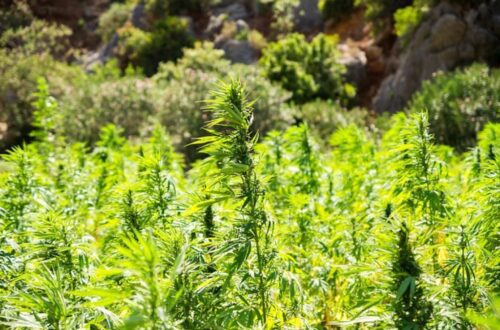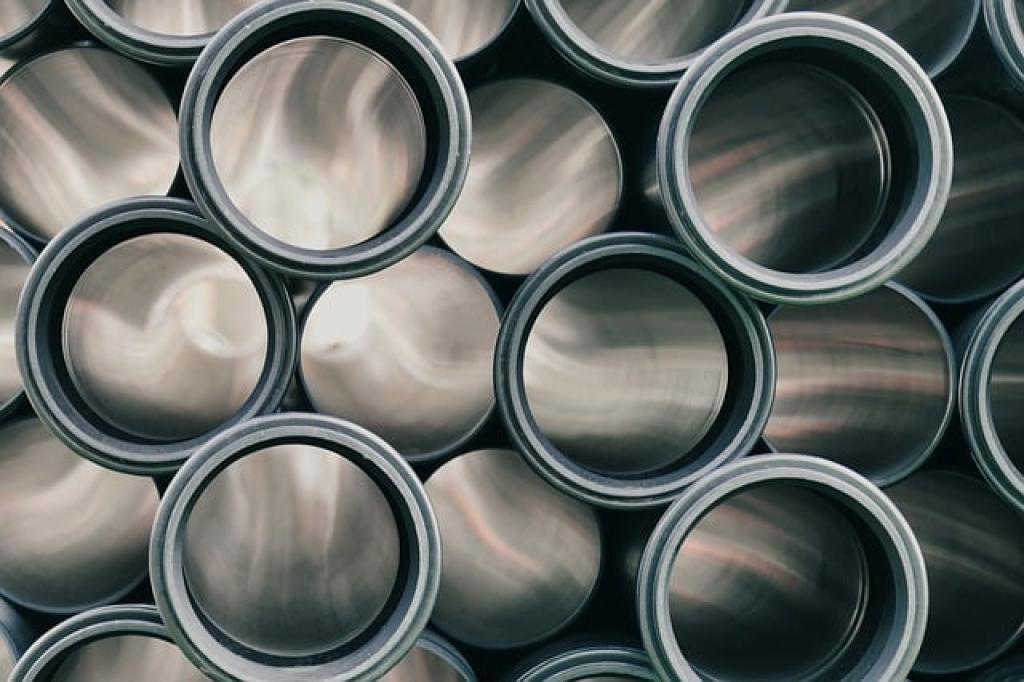
What does it mean to ‘go green’? It is a commitment or a conscious choice to alter daily behaviors and preferences toward more environmentally friendly options. This includes opting for products crafted from renewable resources, conscientious recycling efforts, and aiming to shrink our carbon footprints.
This choice isn’t simply about swapping one brand for another or picking the recyclable symbol on a package. It’s about recognizing the vast array of human activities that contribute to greenhouse gas emissions and making informed decisions to curtail those effects. It’s about ensuring that our children, and their children, inherit a world that’s livable and vibrant.

It’s an interconnected effort: every solar panel installed, wind turbine erected, or public transit journey taken is a step in a greener direction. Each action coalesces to potentially lessen the impact of climate change, making ‘going green’ an absolute imperative in both our present and our future.
The journey to a greener lifestyle is not just about personal satisfaction or ecological responsibility. It’s also tied to the broader, collective benefit of all who inhabit this planet. By embracing renewable resources and recycling, we do more than reduce carbon emissions; we contribute to a cycle of sustainability that holistically supports a better living environment.
The Imperative of Embracing Green Practices

You and I live on a living, breathing planet. Unlike any other place we know in the immense universe, Earth offers us everything we need to thrive. But, as we continue our daily routines, we can’t turn a blind eye to the consequences of our actions on this one-of-a-kind habitat. Changing our ways to include more green practices isn’t just a noble endeavor; it’s critical for our survival.
Let’s consider the facts. Climate change is no longer a distant concern. Its effects are visible and growing, from rising sea levels to extreme weather events that threaten lives and livelihoods. The overuse of non-renewable resources is pushing our ecosystems to their limits. Our current path is unsustainable, and unless we pivot now, the damage may become irreversible.

Embracing green practices isn’t just about guarding against negative outcomes; it’s about fostering a positive, vibrant ecosystem that supports diverse life. When we talk about ‘going green,’ we’re referencing a commitment that redefines the way we live, work, and interact with the environment around us.
Taking a leaf from the book of global green initiatives gives us some optimism. Around the world, countries are demonstrating that sustainable practices can lead to cleaner air, water, and soil, contribute to economic growth, and even create jobs in green industries. These successes underline why the movement to go green is such a big deal.

As we turn the page to the next chapter in our collective history, it’s important to understand the roadblocks companies face in their green transformations. Just as individuals confront obstacles in adopting sustainable habits, businesses, too, have their unique set of challenges.
The Challenges Businesses Face in the Green Transition

It’s no secret that businesses today are under increasing pressure to adopt sustainable practices. Yet, the road to greener operations is lined with significant hurdles. At the forefront, education about the environment and sustainable practices is often sporadic and inconsistent. Without a solid understanding of the positive impact of going green, both on the environment and the company’s long-term viability, many businesses struggle to justify the initial investment.
Funding, or rather the lack of it, presents another roadblock. Retrofitting factories, investing in renewable energy, and sourcing sustainable materials can require significant upfront capital. For small and medium-sized enterprises especially, this can be a daunting financial strain. Compounding that, access to materials that meet green criteria is not always straightforward. The search for suppliers who can provide high-quality, sustainably produced resources often turns into a difficult quest.

The competitive market doesn’t pause for companies striving to become more sustainable. Maintaining profit margins while investing in green technologies and processes can seem like walking a tightrope. Furthermore, there’s the challenge of anticipating regulatory changes and consumer expectations.
Yet, there’s a silver lining. Heightened consumer awareness is now leading to a greater demand for eco-friendly products. The market is progressively rewarding businesses that prioritize sustainability. This shift not only bodes well for the planet but also for forward-thinking companies who are willing to view the green transition not as an obstacle but as an avenue for innovation and growth.
Catalyzing Change: From Legislation to Collective Action

I look at Colorado’s recent law to ban toxic PFAS in household items starting in 2026 as a beacon of hope. It demonstrates the powerful role of legislation in initiating environmental change. Imagine the ripple effect if this kind of law were enacted across all fifty states, and better yet, globally. The banishment of PFAS from products is just one example of the stringent actions needed to pivot toward a more sustainable future.
But let’s be realistic; laws alone won’t create the shift needed. It’s a two-front battle requiring both wise policy-making and a change in consumer behavior. By demanding greener products, you and I can exert immense pressure on companies, guiding their hand toward sustainability. I believe that when it comes to influencing major corporate decisions, there’s strength in numbers.
As we martial support for greener products, we must remember that sustainable innovation doesn’t happen overnight. Companies will face a period of trial and error as they develop new, eco-friendly practices. It will be a rough path, but with consistent consumer support and clear legislative guidelines, these difficulties will lead to breakthrough innovations that benefit us all.
In closing, the gravity of our environmental crisis calls for drastic, collective action. It’s time for each of us to play our part, whether that’s through mindful purchasing, grassroots activism, or supporting green policies. Together, we can push for a world where going green is the norm, not the exception.

Your choices, big and small, influence the tides of change—can we count on you to help turn the tide?
As always, thanks for reading my article. Please feel free to join the conversation in the comments below. I greatly appreciate your input.
Stacie Fortson, GGWHSF




14 Comments
Aparna
Your articles helps people to understand the importance of “Going Green” and making the world a better place as well as an Inhabitable place. Going green means adopting sustainable practices that minimize harm to the environment and promote the conservation of natural resources. It involves reducing waste, using renewable energy sources, and making eco-friendly choices in daily activities.I appreciate how you break down the concept into actionable steps, like reducing plastic use and supporting sustainable brands. Your point regarding the small, everyday changes made sense to me.
Your emphasis on the need for smarter packaging choices by manufacturers—a critical but often overlooked aspect of the green movement was appreciable. It’s about looking at our activities contributing to greenhouse gas emissions and rethinking our habits and industries to be more sustainable. This broader perspective is a powerful reminder that we need to make significant changes in our daily lives and the world around us to truly make a difference.
Stacie Fortson
Aparna,
Thank you so much for joining the conversation!
The need for smarter ‘green’ packaging is long overdue for sure. We have too many ‘green’ items still being packaged in wood-based paper packages. While I admire the effort, the packaging is ironically not green, and this could be the biggest step in reducing our landfill burdens.
Welcome to the Go Green With Hemp Revolution, the Hemp Industry intends to make big changes in the near future. Industrial Hemp is one of our strongest allies in the fight against Global Warming, we just need to start growing and utilizing this plant to the fullest, it is not just for CBD by any means, this plant holds a green spark that is comparable to no other renewable resource at our disposal.
Happy Hemp Product shopping!
Stacie Fortson, GGWHSF
Bob Lynch
Your article on what it means to go green is good. I appreciate how you break down the concept into actionable steps, like reducing plastic use and supporting sustainable brands. Your point about the impact of small, everyday changes made sense to me. Do you have any favorite sustainable brands or products that you recommend? I loved the section on eco-friendly transportation options. Do you think there are any emerging trends in this area that we should keep an eye on? Thanks for the inspiring and informative read!
Stacie Fortson
Bob,
I am glad you enjoyed my article ‘What Does It Mean To ‘Go Green’.
Going Green is such an important step for consumers and manufacturers as well. As consumers, starting with small daily changes of using items that are more friendly to our environment is the best way to integrate going green.
Asking any person to clear out their house of all products that are not ‘green’ and start over, is not a viable option, just as it is not a viable option for manufacturers. For a manufacturer, that could mean millions or billions of dollars down the drain, so unfortunately, we must run through the current supplies.
The product that I am most excited to receive that I have just recently ordered is Earth Breeze laundry soap sheets. The colorful plastic jugs that our laundry soap is sold in are some of the worst plastics created by man, They do not recycle well or at all, and every year, there are over 500 million soap jugs tossed out and clogging up our landfills and polluting our air.
I have a few products that I use daily that I simply adore and am becoming very reliant upon. One is EarthStraws from Hemp Traders which also offers hemp-made disposable cutlery. I have found myself purchasing a few other green items from Hemp Traders after shopping with them and seeing what all they have to offer.
Hemp Traders offers top quality ‘green’ products made from Industrial Hemp and is one of the more innovative green companies we have on US soil. Lawrence Serbin is currently working on a more efficient way of making biofuel from Industrial Hemp, which would provide us with one of the safest biofuels known to man. He could sure use our support in buying the innovative products his company has to further fund his exploration of Industrial Hemp Biofuel.
I hope you find at least one product offered by Hemp Traders that you feel you must have. Happy ‘Green’ shopping!
Stacie Fortson, GGWHSF
Elias Masiriva
We need more of these articles for our world to be a better, Inhabitable place. Going green entails adopting sustainable practices that minimize harm to the environment and promote conservation of natural resources. It involves reducing waste, using renewable energy sources, and making eco-friendly choices in daily activities. Going green is a commitment to protecting the planet for future generations by making conscious decisions that have a positive impact on the environment and overall ecosystem.
Stacie Fortson
Elias,
I am glad that you enjoyed the article and thank you so much for joining the conversation. I will get more articles like this published as well. I have a few solutions to offer for aiding in the ‘Go Green’ fight. Every product you see on this website is dedicated to the cause.
Stacie Fortson, GGWHSF
Mike
Stacie, thank you for such an enlightening and thought-provoking article on the importance of going green. Your insights into the broader impacts of individual choices and the challenges businesses face in adopting sustainable practices are eye-opening. I particularly appreciated your emphasis on the need for smarter packaging choices by manufacturers—a critical but often overlooked aspect of the green movement. How do you think consumers can best advocate for these changes in packaging practices?
Stacie Fortson
Mike,
I am very happy that you found my article to be thought-provoking, that is definitely the aim of the article. I am also very happy that I was able to bring awareness of product packaging.
Consumers can best advocate for these package changes by starting at their state level. Colorado has proven to be a state that listens to their citizens by banning the sale of products containing PFAS, the forever chemicals that can cause cancer, and many other ailments.
This law was advocated for by the citizens of Colorado, this proves that our legislators do listen. It may take years for change in some instances, but change is not always as fast as we would like it to be.
I hope this answers your question on how we can advocate to get ‘green’ packaging on all products.
Welcome to the Go Green With Hemp Industrial Revolution, we aim to provide better ‘green’ products and packaging.
Stacie Fortson, GGWHSF
angelce903
I loved this article! Unfortunately I am afraid I’m the kind of people who believe that switching brands makes you go green…but this is going to change! Yes, I do believe also that law is not enough to make substantial changes, but everyone must contribute to a green economy and society with the right behavior. It belongs to us to make that change everyday!
Stacie Fortson
AngelCE903,
I am super happy that you found my article to be helpful and that it brought awareness that had been overlooked. I love to be able to provide simple solutions to help a greater cause, awareness is 90% of the battle.
I was once in your shoes as well, I thought ‘going green’ was a brand thing as well, but when you read deeper, you find that a lot of ‘green’ offerings are not sold in ‘green’ packaging, thus defeating the purpose to a certain extent. We need to see some huge changes in product packaging, our landfills are overrunning with non-biodegradable plastics, and we have been losing trees at an alarming rate for numerous years.
Together, we can all make a difference, it requires a worldwide team effort for us to win this battle. The more team members I can help get on board the better. I am glad you have joined the team, in numbers we will win.
Welcome aboard to the Go Green With Hemp Revolution.
Stacie Fortson, GGWHSF
Richard Opara
Going green involves making intentional choices to reduce environmental impact and promote sustainability. While it may require initial effort and investment, the long-term benefits for personal health, cost savings, and environmental well-being make it worthwhile. Practical steps, community engagement, and supporting sustainable businesses are key components of a green lifestyle. What are some specific challenges you’ve faced in your journey to go green, and how have you overcome them? Are there any particular green practices or products that have made a significant difference in your lifestyle?
Stacie Fortson
Richard,
You are correct, going green is making intentional choices to help reduce our environmental impact and promote sustainability. It does take more effort to go green than not to go green, but it can be made easier by manufacturers if more products offered are ‘green’.
We need manufacturers to start choosing smarter packaging for their products as well. Like a pasta company, their product is consumable, but the packaging has always contained some form of tree-based cardboard. These packages should not be made of tree-based paper, we have so many alternatives that renew much faster. This is where we are failing in the ‘green’ movement, it is not necessarily the consumer’s fault, but the manufacturer’s choices in packaging. Something that simple.
To answer your questions:
What are some specific challenges you’ve faced in your journey to go green, and how have you overcome them? My biggest challenge to start with was finding quality products, it seemed that I was sacrificing quality to go green, but then I began to research and was able to locate better quality products, they cost a little more in some cases, but as you said it is worth it.
Are there any particular green practices or products that have made a significant difference in your lifestyle? Finding hemp-based products was by far the most significant change for me, also this opened my eyes to other fantastic green materials like bamboo and flax. I had no idea there were so many uses for these 3 plants.
The product that I tried recently that I really cannot stop bragging about is the EarthStraws from Hemp Traders, they are so awesome and way better than any other biodegradable straw I have ever used. And what a conversation starter!
Thanks for stopping by and joining in the conversation, I hope I have answered your questions fully. I also hope to see you as a return visitor and new member of the Industrial Hemp Revolution.
Stacie Fortson, GGWHSF
S.J
Hi Stacie,
Thank you for your insightful and compelling article on the importance of ‘going green’! I really enjoyed how you explained that going green isn’t just about individual actions, but also involves changes on a larger scale, like how businesses operate and the laws we follow.
I appreciate how you showed that being green goes beyond simple choices like recycling or buying eco-friendly products. It’s about looking at all the ways our activities contribute to greenhouse gas emissions and rethinking our habits and industries to be more sustainable. This broader perspective is a powerful reminder that we need to make significant changes in our daily lives and the world around us to truly make a difference.
Best regards,
Saba
Stacie Fortson
Saba,
I am glad you joined the discussion on the importance of going green and what it means. You are so correct, it goes way beyond product choices and recycling. We need to rethink the way we are living and transporting to and from work, and many other facets of our lives.
Every little step taken by individuals gets us a step closer to our goal of reducing greenhouse gases and leaving less of a carbon footprint. While our efforts feel small as individuals, when you combine our efforts they become very significant. Say out of 20 homes, if 15 are taking green steps, then multiply that around the world and the effort level has just increased in multitudes.
We have the power in numbers, we just need to realize how significant our numbers can be with just a bit of effort.
Thanks again for joining in on the conversation.
Stacie Fortson, GGWHSF